THIS WEEK: The conclusion of Batman/Catwoman arrives, and we look at how the series as a whole stacks up compared to writer Tom King’s other Gotham-based work.
Note: the reviews below contain spoilers. If you want a quick, spoiler-free buy/pass recommendation on the comics in question, check out the bottom of the article for our final verdicts.
Batman/Catwoman #12
Writer: Tom King
Artist: Clay Mann
Colorist: Tomeu Morey
Letterer: Clayton Cowles
Cover Artist: Clay Mann
Writer Tom King helmed DC’s Batman ongoing series from 2016 until 2019. The writer had a much-ballyhooed 100-issue plan for the series, so his removal from the series with issue 85 was a surprise to many. The relationship between Batman and Catwoman played a central role in King’s run on Batman, and shortly after his exit from the series was announced, it was also announced that King would team with frequent artistic collaborator Clay Mann on Batman/Catwoman, a twelve-issue series that King promised at the time, “concludes years of stories and defines what Batman is, can, and will be.”
Originally slated to begin in January of 2020, Batman/Catwoman instead debuted in December of that year as part of Black Label, DC’s non-continuity, creator-focused imprint. The final issue of the series, in stores this week, places a bookend on King’s long run on Batman, finally giving readers the wedding of Batman and Catwoman that was teased and marketed and then swerved away from in 2018’s Batman #50.
Does Batman/Catwoman “define what Batman is, can, and will be”? I would argue no. Ultimately Bat/Cat is much more of a Catwoman series than a Batman series, with a third of the book taking place in the future following the Dark Knight’s death and featuring the relationship between an older Selina and Huntress Helena Wayne, Selina and Bruce’s grown daughter. King has had a strong vision for Selina from the start of his Bat-writing tenure, and truly Selina is the most compelling character of the series. Batman, The Joker, Helena, Phantasm – all are there in service of Selina’s story.
This is fine with characters like Batman and The Joker, with whom readers are already fairly familiar, but for Helena and Phantasm, their lack of any sort of development is a disappointment. It’s almost easy to overlook the weakness in the other characters given how strong a character Selina is – she dominates every scene she’s in, and she’s in, if I’m not mistaken, every scene of the series. But Phantasm’s role in the series in particular is a big letdown, given the hype of her introduction into the DC Universe nearly thirty years after she first appeared in many people’s favorite Batman movie. Andrea Beaumont’s story in this series ultimately doesn’t amount to much, though, and a twist revealing she and Selina’s deeper relationship in this final issue barely justifies her nothingness throughout the rest of the book. Phantasm in this book is a cool cape and a glove, and a reminder of a better story, and it’s hard not to think Batman/Catwoman wouldn’t have been better off without her in it at all.
Another thing the series could have ultimately done without is its structure. Three parallel narratives run throughout, two of them starring Batman and Catwoman and the third starring Selina and Helena. The timeline switches, which are indicated only visually, are less of a problem during the future sequences than they are during the two contemporary-looking Bat/Cat sequences, where the characters wear essentially the same costumes and have the same looks. If Mann and colorist Tomeu Morey attempt to indicate the timeline jumps through the art it rarely comes across immediately, and the result is a needlessly confusing reading experience.
Compare the structure of this book with that of King’s other current Bat-project, Batman: Killing Time with artist David Marquez. The time-jumps in that series are generally less drastic – hours or minutes instead of years – and King uses captions to indicate the jumps and where all the scenes take place in relation to each other. That structure feels integral to the storytelling of the series, whereas in Batman/Catwoman it comes across as complicated for the sake of being complicated, and ultimately a failure in the hands of artists who aren’t always capable of conveying the jumps effectively.
I would be fascinated to know how the plans for Batman/Catwoman changed between when it was announced and when it was released. Taking the series out-of-continuity likely impacted some things, though the book is certainly a continuation of themes King and co. explored during his primary Batman run. As released, though, between James Tynion IV’s blockbuster run writing the character and the overall expansion of titles bearing a bat on the cover, it’s hard not to think that Batman and the Batbooks simply moved beyond Bat/Cat to the point that it struggled to find a purpose for existing. If nothing else, though, Batman/Catwoman – and the mid-run delay in its publishing schedule – gave us a great one-shot issue that served as a tribute to artist John Paul Leon, as another spotlight for King’s Catwoman, and as a well-executed experiment in storytelling structure compared to the main series it tied into.
Final Verdict: Skip.
Round-Up
- There’s another Bat-ending this week, as Detective Comics #1061 brings writer Mariko Tamaki‘s tenure on the series to a close. After the massive weekly “Shadows of the Bat” storyline, Tamaki is joined by cowriter Nadia Shammas for her final arc, which picks up on loose threads related to Arkham Tower and brings The Riddler into play for good measure (and optimal cross-media tie-in with The Batman). Tamaki has taken the title of this series to heart, leaning into the detective aspect of Batman, and this final arc is another entertaining mystery. This run hasn’t always set the world on fire, but it has been solidly, consistently entertaining for nearly 30 issues, which is a feat worth celebrating.
- And for a new beginning, Deathstroke, Inc. #10 marks Ed Brisson‘s arrival as new series writer, joined by artist Dexter Soy for a “Year One” storyline that fleshes out Slade Wilson’s origin. The pair take a story that longtime fans know and add a decent amount of character depth and pathos to it. They’re also certainly setting things up for future storylines here, but it’s not blatantly obvious that’s what’s happening, as is often the case with flashback stories like this.
- Action Comics #1044 continues writer Phillip Kennedy Johnson‘s Warworld Saga storyline, which we now know will wind down beginning in September. As solid as this storyline has been, knowing there’s an end in sight is something of a relief, as it hopefully ensures Johnson and co. won’t run out of steam stretching things out. Warworld has been a great showcase for the inherent qualities that make Superman great, though, and this issue is no exception. The backup story also features a nice deep-cut character return that’ll catch the attention of ’90s Superman readers.
Miss any of our earlier reviews? Check out our full archive!


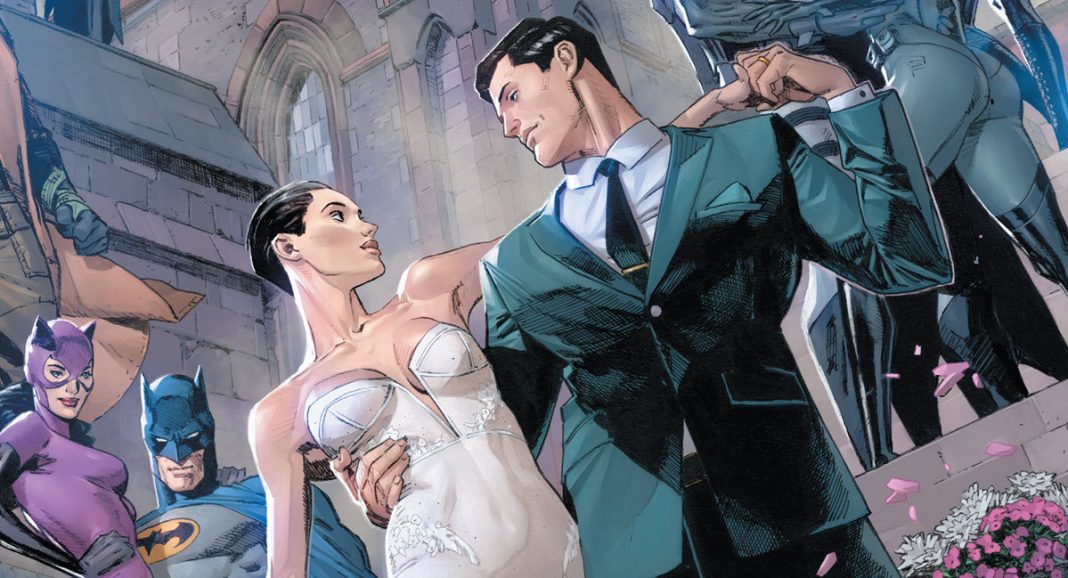
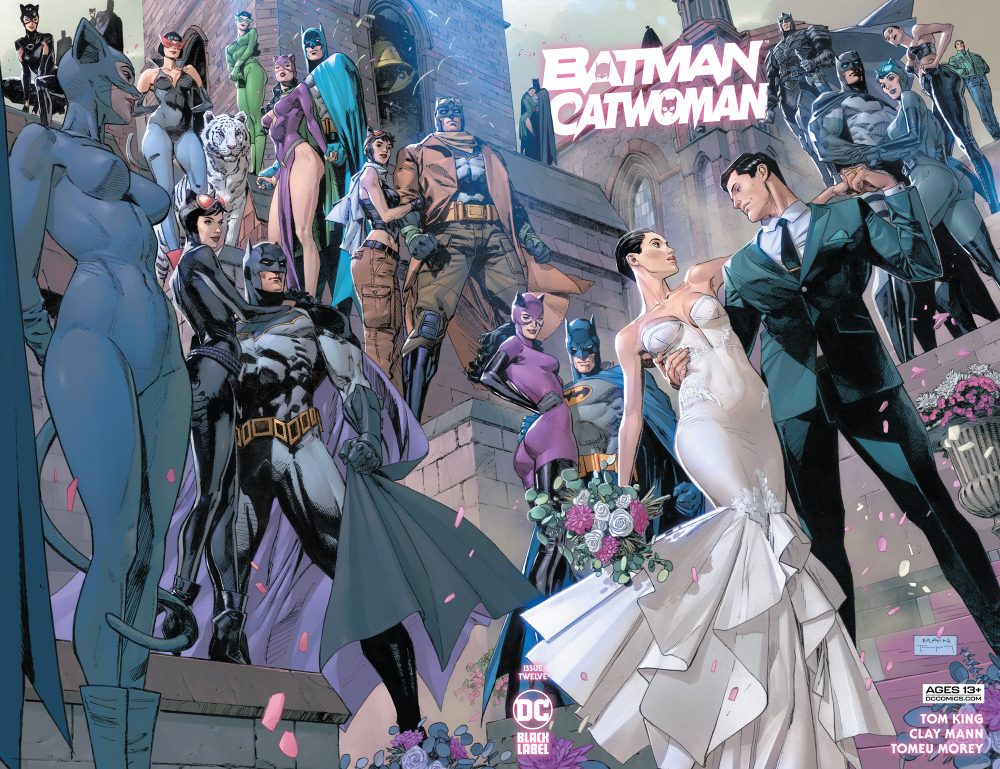
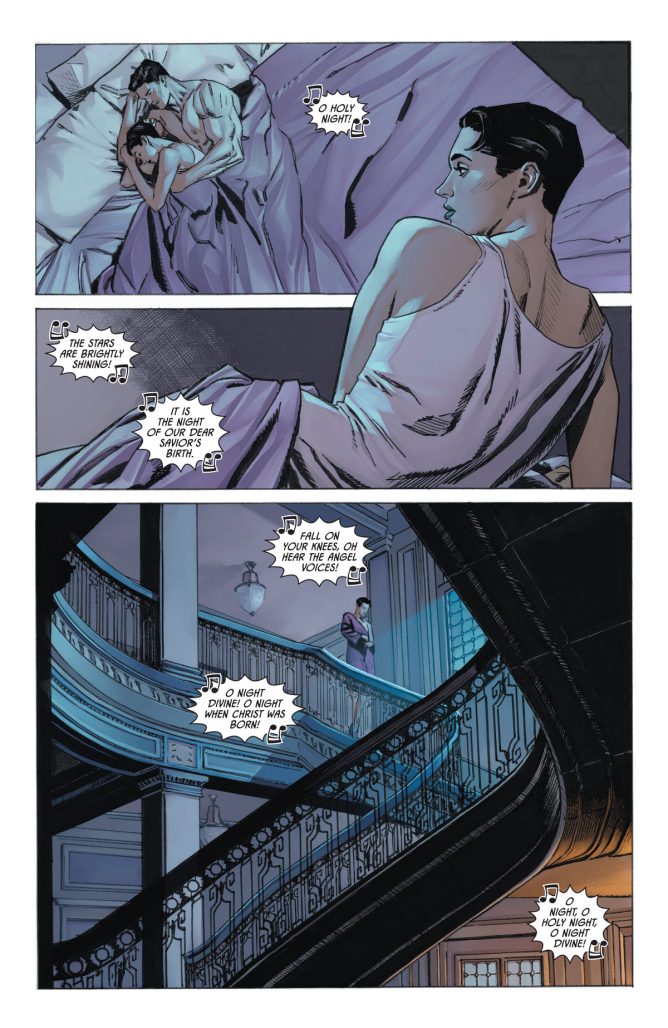
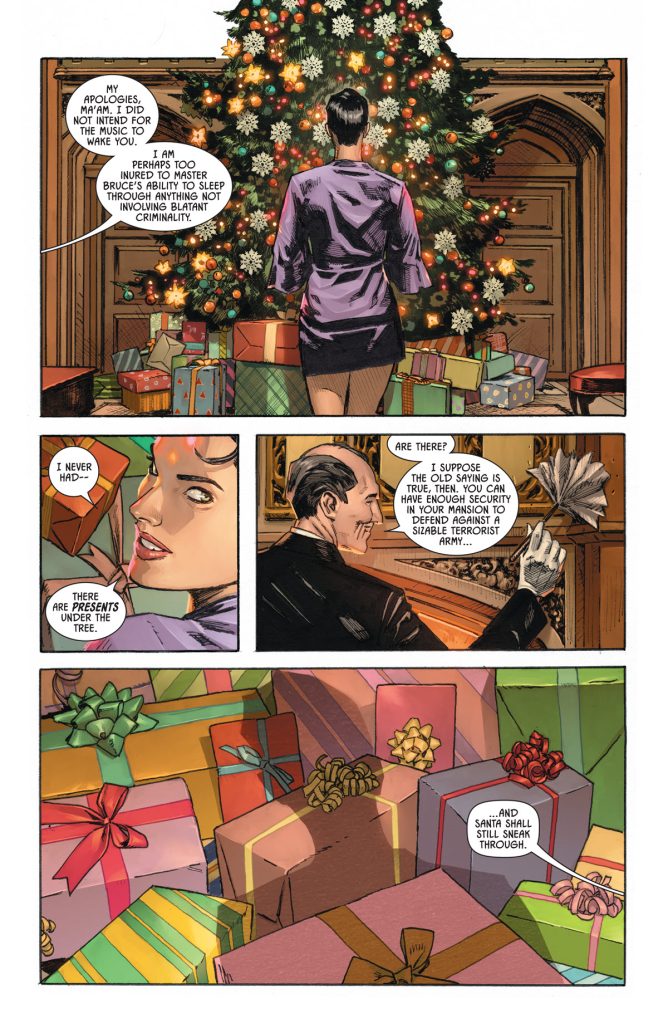
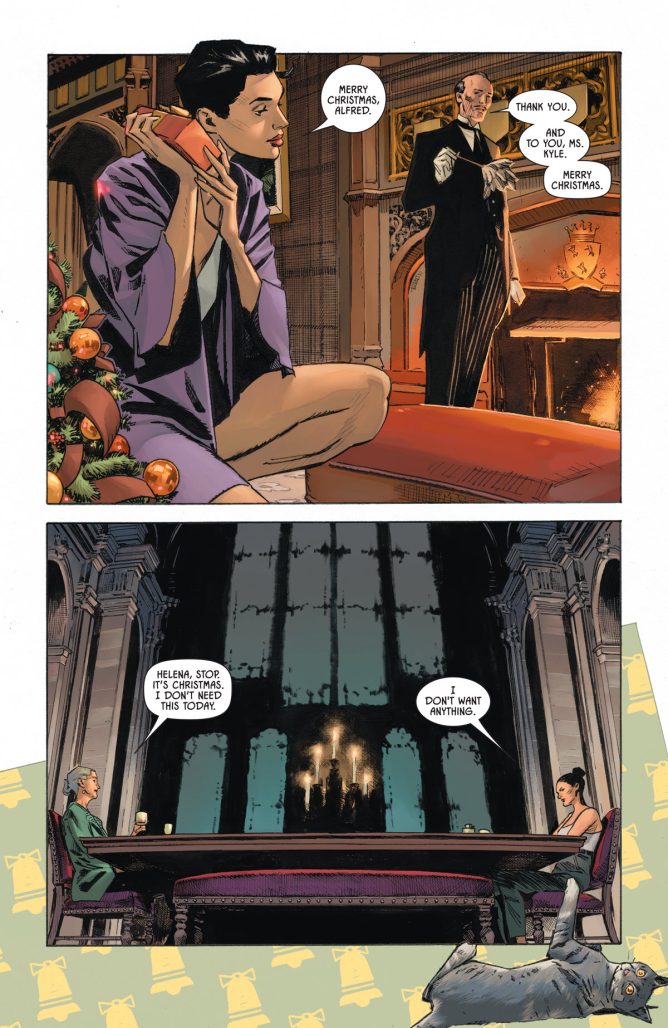
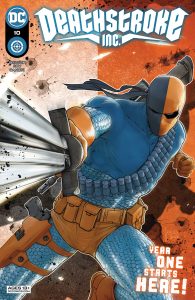
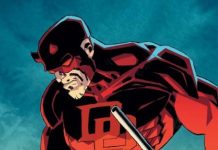
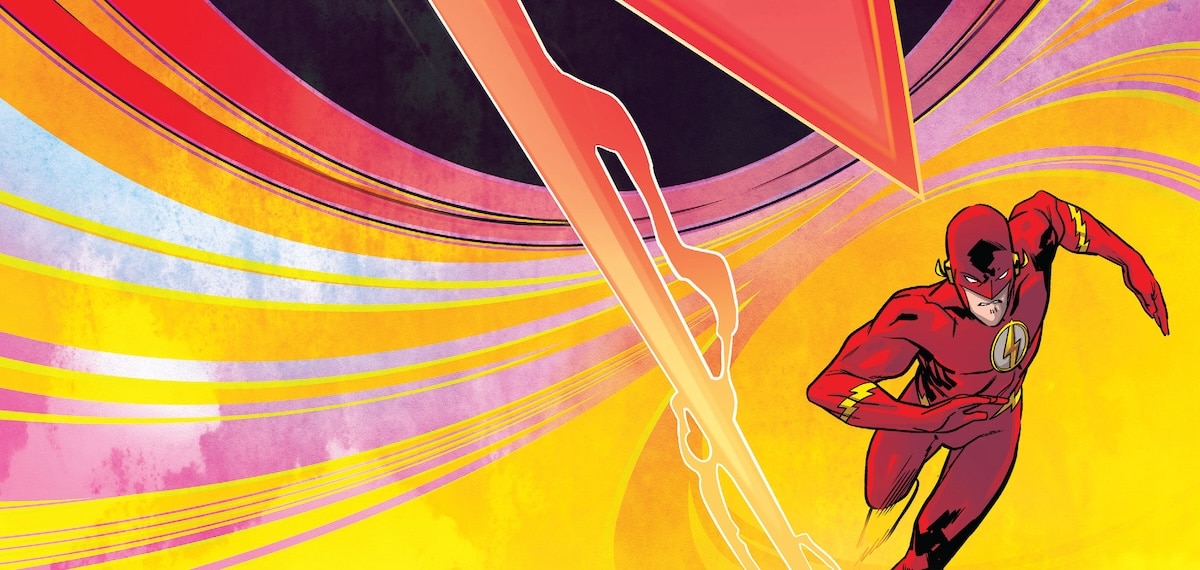





I am NOT a King fan. But DC should have just embraced his effort, seen it through, and have Batman/Catwoman marry. Stories like this — where a creator has to finish his vision in an out-of-continuity miniseries – really exemplify the stagnation in DC and Marvel comics. I’m a long time fan and admittedly not for wholesale changes like just replacing all the icons with new, younger versions. I do hang on to my nostalgia. But you can under certain circumstances find lasting ways of progressing those icons’ stories, just as Lois and Superman have been married now for years and have a child.
I don’t understand anyone praising Johnson’s run on Action. This too-long and much-too-drawn-out Warworld nonsense has made The Trial of the Flash seem tight and coherent. Enough already.
I respectfully but highly disagree with your review, since the objective of this book has been to show Selina’s vision in everything that has impacted her being in relation to Batman, for me it exceeded my expectations. It was always an exploration of Selina’s identity, how she sees herself at different times in her life (at first she was a villain and then she ended up being something else), how others perceive her, and how that perception of others clashes with her. with her. conception of himself considering his relationship with Batman. I understand that time jumps are not for everyone but for me they are similar to how Selina is as a person, that is, a very complex person.
I think this story showed how scary, manipulative and sadistic the Joker can be, it treats this character much better than Tynion’s Joker War imo
Since in one of the paragraphs you do an overview of the series you should mention the artist Liam Sharp because he also contributed to this book, he drawed from issue #7 to #9
I had spelling mistakes in some instances of my previous comment
“how others perceive her, and how that perception of others clashes with her. with her. conception of himself considering his relationship with Batman.”
correct version:
how others perceive her, and how that perception of others clashes with her own perception considering her relationship with Batman
Batman/Catwoman was pretty disappointing. I think the past timeline should have been dropped, the book should have been delayed for Mann to finish the middle portion as Sharp’s art destroys the flow making a hard to parse book even harder to parse. Honestly Mikel Janin should have been the artist on the book as he was the artistic backbone to King’s Batman run. I think the Special was the best part as it fit in with Annual #2 and the short stories that took place in the future timeline which was best left as snippets. King’s Batman is so all over the spectrum of quality and this toward the bad end with “Bruce Wayne”, Batman #72, and Everybody Loves Ivy.
DC should have accepted his effort, seen it through, and had Batman and Catwoman marry. Stories like these, in which a creator is forced to complete his vision in an out-of-continuity miniseries, reflect the stagnation in DC and Marvel comics.
Comments are closed.